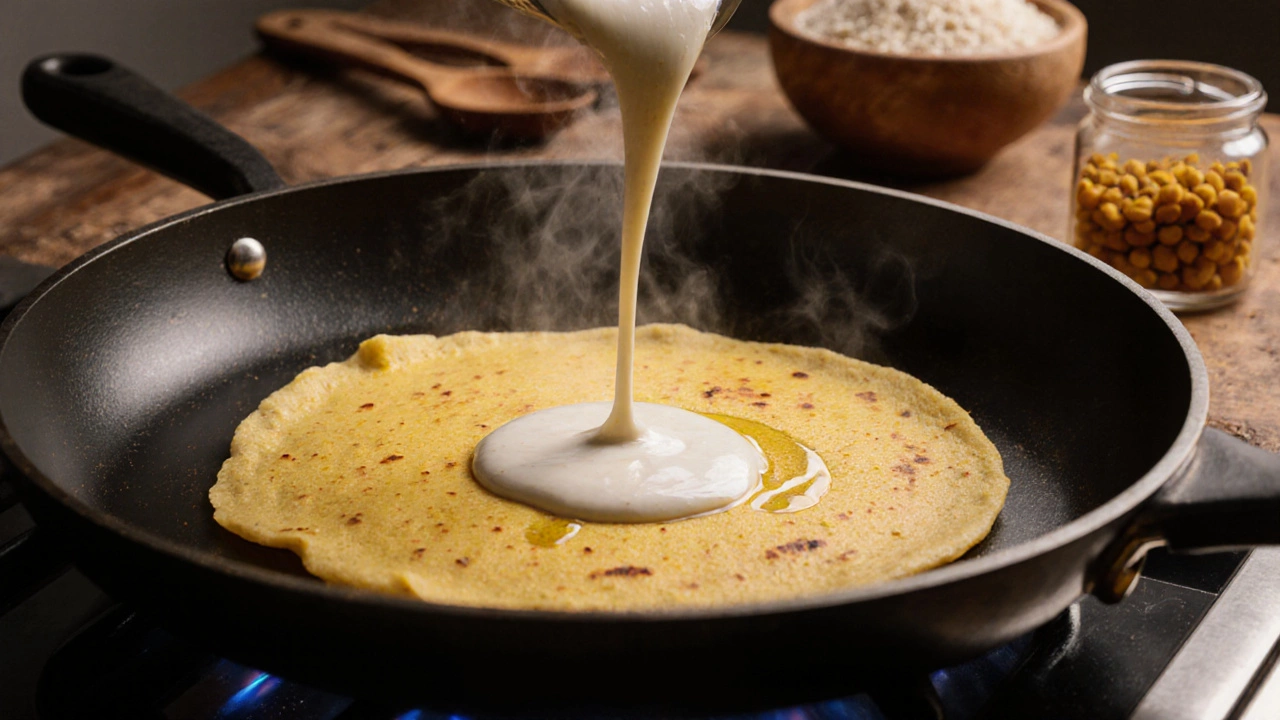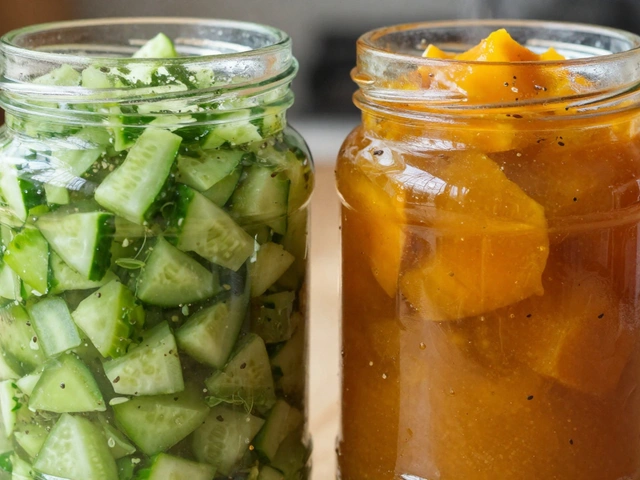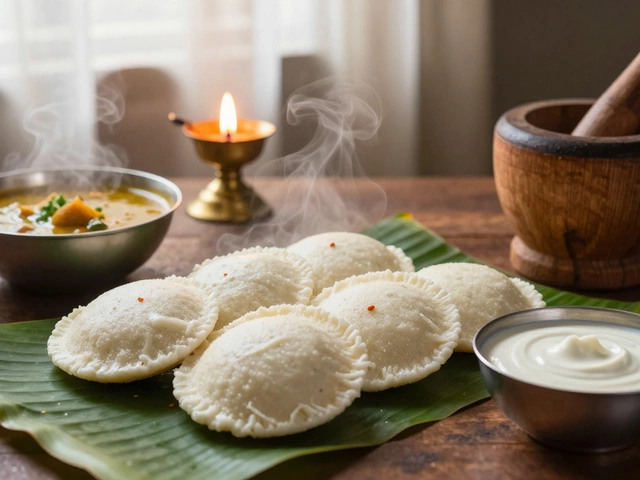Dosa Nutrition Calculator
Customize Your Dosa
Nutrition Results
Ever wonder if that thin, crispy dosa you love for breakfast or a late‑night snack is actually good for you? Let’s break down the facts, crunch the numbers, and see how this South Indian staple fits into a balanced diet.
Key Takeaways
- Dosa is low in calories but can vary based on oil and fillings.
- The batter’s fermentation adds probiotics and improves digestibility.
- Using brown rice or millets boosts fiber and lowers the glycemic impact.
- It’s naturally gluten‑free and vegan, fitting many dietary preferences.
- Pairing with nutrient‑dense chutneys turns a simple snack into a wholesome meal.
What Exactly Is Dosa?
Dosa is a thin, fermented crepe made from a batter of rice and lentils. Originating in South Indian cuisine, it’s cooked on a hot skillet until crisp, then served with a variety of accompaniments.
The Science Behind the Batter
The magic starts with two main ingredients:
- Rice provides the carbohydrate base and supplies quick‑acting energy.
- Urad dal (black gram) contributes protein, fiber, and the essential enzymes for fermentation.
When these are soaked, ground into a smooth batter, and left to ferment (usually 8-12 hours), Fermentation produces beneficial bacteria like Lactobacillus. These microbes break down antinutrients, enhance mineral absorption, and create natural probiotics that support gut health.
Nutrition Snapshot
A plain 100‑gram serving of traditional dosa (about one medium‑size crepe) typically contains:
| Component | Amount |
|---|---|
| Calories | 120 kcal |
| Carbohydrates | 22 g |
| Protein | 3 g |
| Fat | 2 g (mostly from cooking oil) |
| Fiber | 1.5 g |
| Sodium | 15 mg |
These numbers shift when you add oil, butter, or stuffing like potato masala. Still, the base remains relatively low‑calorie compared to deep‑fried snacks.
How Dosa Stacks Up Against Other Indian Snacks
| Snack | Calories | Carbs (g) | Protein (g) | Fat (g) |
|---|---|---|---|---|
| Dosa (plain) | 120 | 22 | 3 | 2 |
| Idli | 130 | 28 | 4 | 1 |
| Samosa (fried) | 260 | 30 | 5 | 15 |
| Pakora | 250 | 20 | 6 | 18 |
From a calorie‑control perspective, dosa beats most deep‑fried options, and its fermentation gives it a nutrient edge over plain steamed idli.
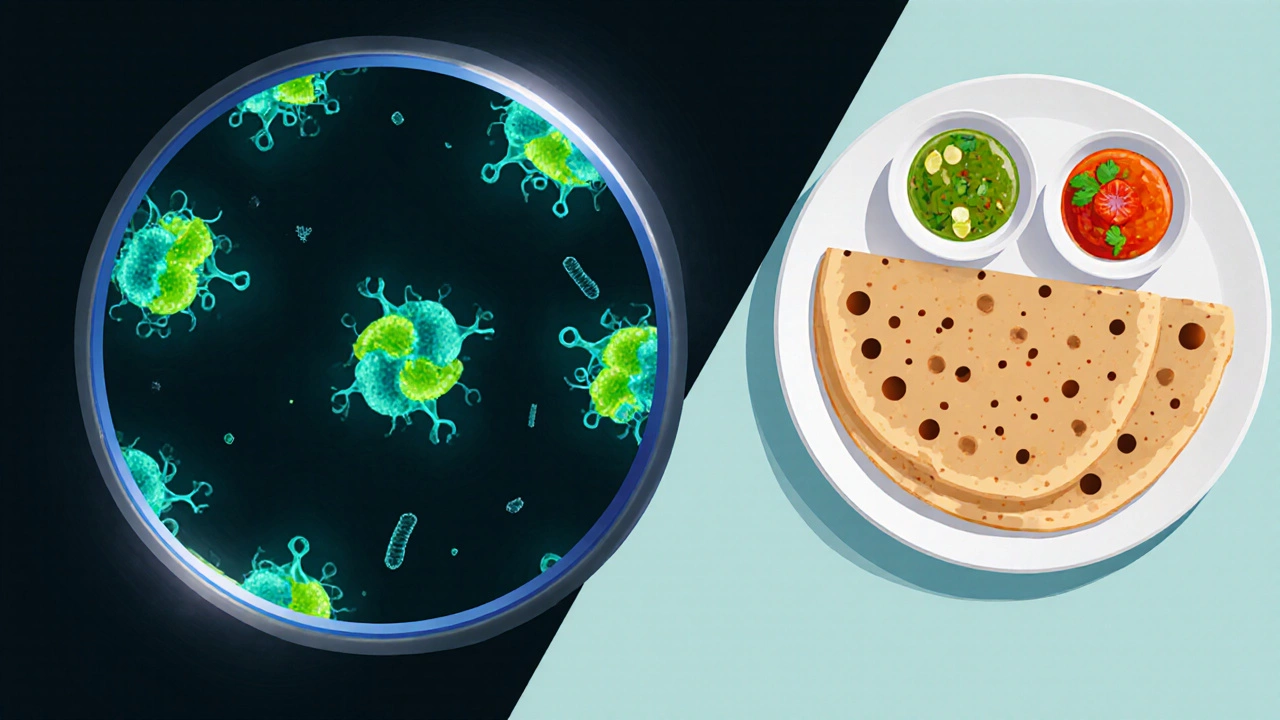
Glycemic Impact and Blood Sugar
White‑rice batter gives dosa a moderate Glycemic index rating around 55‑65. That’s lower than white bread but higher than whole‑grain alternatives. Swapping half the white rice for brown rice, millets, or quinoa can drop the GI to the 40‑50 range, making it friendlier for people watching blood sugar spikes.
Probiotic Perks
The Probiotics formed during fermentation support a healthy gut microbiome. Studies from 2023 show that regular consumption of fermented rice‑lentil foods can improve digestion and reduce bloating, especially in vegetarian diets.
Dietary Compatibility
Because the basic batter contains only plant‑based ingredients, dosa is naturally Gluten‑free. It fits vegan, vegetarian, and low‑FODMAP plans (as long as you avoid high‑FODMAP fillings).
Smart Ways to Keep Dosa Healthy
- Limit oil. Use a non‑stick pan or a light spray of oil; a teaspoon per crepe is enough to get that golden color.
- Boost fiber. Add whole‑grain flour, oats, or millet to the batter.
- Load up on veggies. Pair with fresh tomato, cucumber, or carrot cucumber chutney for added vitamins.
- Watch the fillings. Opt for lentil or mixed vegetable stuffing instead of heavy potato masala with ghee.
- Control portion. One medium dosa (≈100g) is a balanced snack; two larger ones can push calories up quickly.
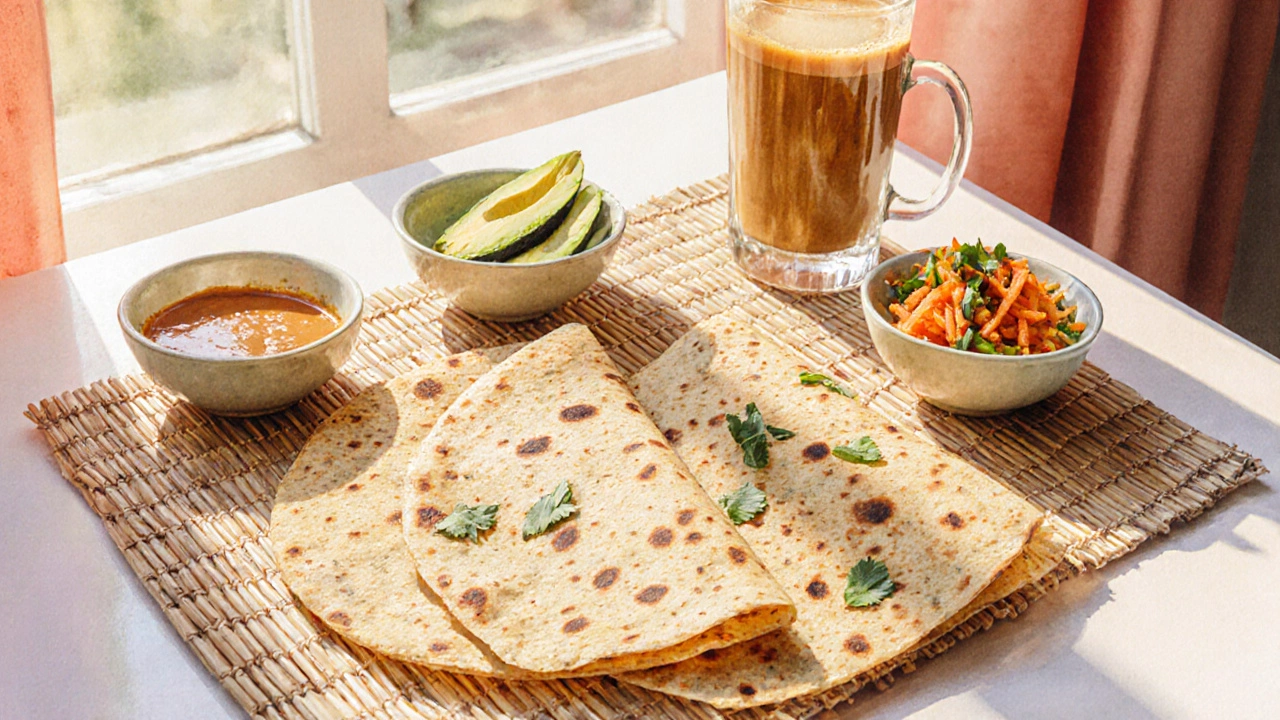
Common Myths About Dosa
- “Dosa is just fried rice.” - The batter’s fermentation adds proteins, vitamins, and live cultures, making it more than a simple fried carb.
- “It’s high in carbs, so bad for weight loss.” - While carbs are present, the overall calorie count stays low, especially when cooked with minimal oil.
- “All dosas are the same.” - Variations like ragi dosa, oats dosa, and neer dosa change the nutrient profile dramatically.
Quick Recipes for Healthier Dosa
Try these two easy twists that keep the flavor but add nutrition.
1. Millet‑Mixed Dosa
- Combine 1 cup millet flour, ½ cup rice flour, and ½ cup urad dal batter.
- Ferment for 6‑8 hours.
- Cook with a brush of sesame oil; serve with coriander‑mint chutney.
2. Veggie‑Loaded Rava Dosa
- Blend 1 cup semolina (rava) with ¼ cup rice, ¼ cup urad dal, and 1 cup grated carrots.
- Ferment briefly (2‑3 hours) for a softer texture.
- Spread thin, drizzle a few drops of olive oil, and flip.
Bottom Line: Is Dosa Healthy?
Short answer: Yes, when prepared mindfully. The fermented batter offers protein, probiotics, and a lower glycemic load than many breakfast staples. The key is to keep oil in check, choose whole‑grain bases, and pair with nutrient‑dense sides.
Frequently Asked Questions
Can I eat dosa every day?
Yes, as long as you keep portions moderate and avoid heavy oil or high‑calorie fillings. Pair with fresh chutney or a side of lentils for a balanced meal.
Is fermented dosa batter safe for everyone?
Most people tolerate it well, but those with a compromised immune system should ensure the batter smells fresh and isn’t left beyond 24hours at room temperature.
How many calories are in a plain dosa?
A typical 100‑gram plain dosa contains about 120kcal. Adding oil or stuffing can raise the count by 30‑80kcal per serving.
Can I make dosa gluten‑free at home?
Absolutely. Stick to rice, urad dal, and optionally millet or quinoa. Avoid wheat flour blends.
What’s the best way to store leftover batter?
Keep it in an airtight container in the refrigerator for up to 3days. Stir gently before using; a slight sour smell is normal.
